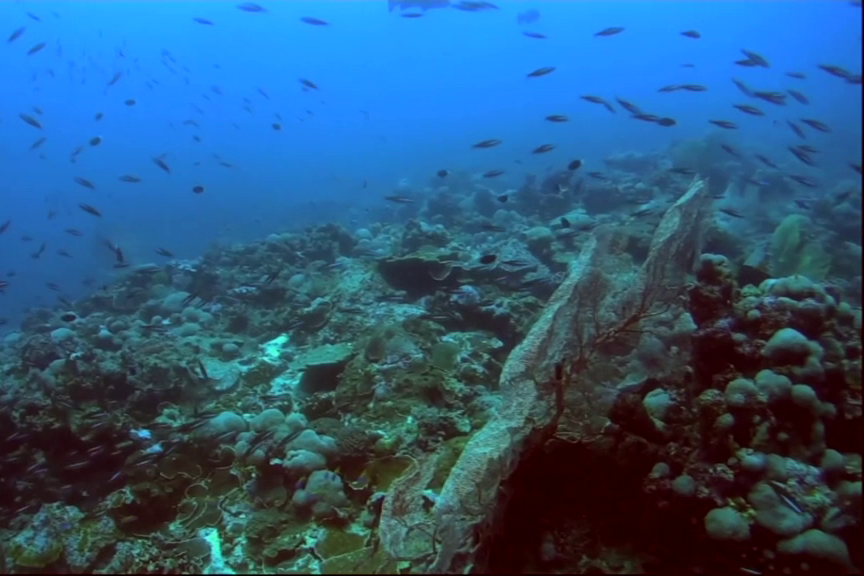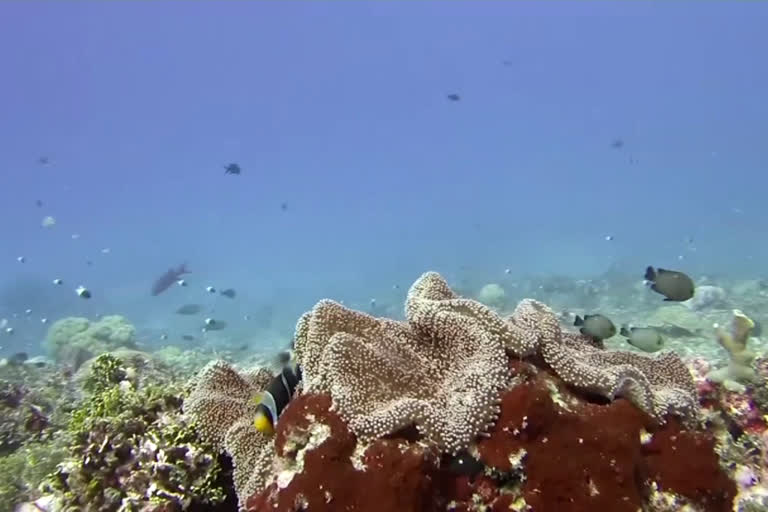Aldabra (Seychelles): A beautiful animated painting, and the canvas is blue. The remote atoll of Aldabra in the Indian Ocean has got all the elements of magnificence. It has fishes in all the vibrant colors and sizes.
Having had least human interference compared to the other oceans of the world, there is an abundance of marine life in the waters of Seychelles. British-led Nekton mission has revealed that the reefs are healthy.
Aldabra is one of the largest coral atolls in the world, it is more than 1100 kilometres from the Seychelles' capital Victoria. It is considered as a safe haven for the marine ecosystem at a time when coral reefs are being bleached.

Aldabra has been a protected site for decades and became a UNESCO World Heritage Site in 1982, which has given the atoll time to recover from the effects of fishing.
The scientists on board the Ocean Zephyr have not only explored the waters just below the layers but also have dived deep into the ocean with the help of manned submersibles.
Layers of the Ocean:
- Altiphotic- This layer descends to 30 meters below the surface and presents the highest number of fish and coral.
- Mesophotic- Sunlight struggles to penetrate in this layer, it has less diversity.
- Rariphotic- Ranges between 130 meters and 300 meters below the surface, life is scarce.
Marine Scientist Rowana Walton has been comparing the reef to other parts of the Seychelles facing higher fishing pressure.

"Over the past few days, what we've seen on our reefs here is that there is a higher number of predatory fish here on the coral reef. So that's your Sharks, that's also your Groupers and Snappers - those larger bodied fish - and we are seeing higher abundance of those here than perhaps elsewhere in Seychelles, particularly in the inner islands where there is higher fishing pressure. So having a higher number of these fish, these large bodied predatory fish is an indicator of a healthier coral reef ecosystem. So it indicates that these reefs here are much healthier than we've seen elsewhere," she says.
Scientists of the Indian Ocean Mission have seen various species of sharks, such as Blacktip Reef sharks, White Tip sharks, but also Groupers and Snappers.
"Aldabra can provide a baseline for what some atolls in this sort of latitude might look like if human activities hadn't impacted them," says Lucy Woodall, the expedition's principal scientist.
A special National Geographic labs camera dropped to the sea floor filmed what is believed to be a Sixgill shark at a depth of 320 meters.
But despite all the protection provided to Aldabra, the atoll remains at a risk of coral bleaching. Man made waste disposed off on the other beaches can also reach Seychelles and harm the marine life here.
Also read- Mozambique rebuilding after cyclone Idai



